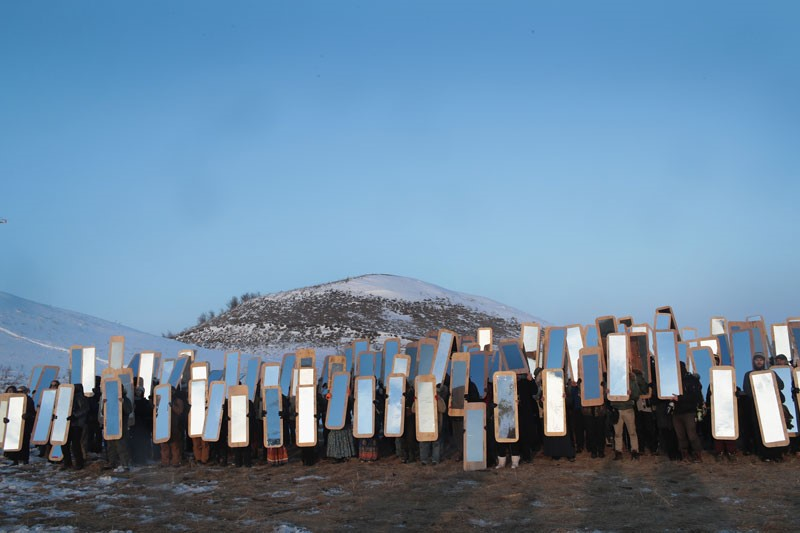Upper Level Seminar: Topics in Culture and Environment

How is the environment connected to visual art? This course will explore some of the many answers to that question. For example, over the past decade, artists from around the globe have used art to advocate and care for the natural world. In 2015, Icelandic art star Olafur Eliasson installed twelve blocks of melting glacial ice in Paris's Place du Panthéon to act as a ticking clock for the UN Climate Summit. The following year, Native Water Protectors gathered at Standing Rock in opposition to the Dakota Access oil pipeline. Artists created posters, documentaries, and instructional videos for DIY projects to advance their cause. These projects build on long histories of art and environmental care, but this course will also look beyond activism to ask what art can tell us about environmental history. For example, what can a landscape painting tell us about a culture's environmental values, and what can we learn about a region's environmental history through a weathered stone sculpture? How have artists translated environmental data and scientific research into visual communications? Or, in the case of industrial propaganda, how have artists supported destructive environmental behaviors? The goal of this course is to implement tools from environmental studies and art history to better understand our world. For example, environmental art history can help us to locate the cultural roots of today's climate crisis. Locally, artists can help us to understand our immediate ecologies.To achieve this goal, we will explore foundational theories and examples of environmental art history from across time periods and geographies."Environmental Art History"is a broad and interdisciplinary course, so students from across the university are welcome and will have ample opportunities to shape assignments to fit their academic interests. Each week we will read a broad range of interdisciplinary texts and consult diverse forms of art. Students will be asked to lead one class discussion in consultation with the professor. Students will also select one artwork, for which they will develop an environmentally informed approach throughout the semester.
HISTART Concentration Distributions: 4. Modern and Contemporary, D. Europe and the US.
Final projects may take a range of formats, including: an exhibition proposal, a thematic research paper, or a podcast.
Course Requirements: Reading Responses, Presentations, Final Projects . Intended Audience: Upper-level undergraduates with an interest in art or the environment.
Class Format/: Two 90-minute weekly meetings; a combination of lecture, class discussion, and presentations.